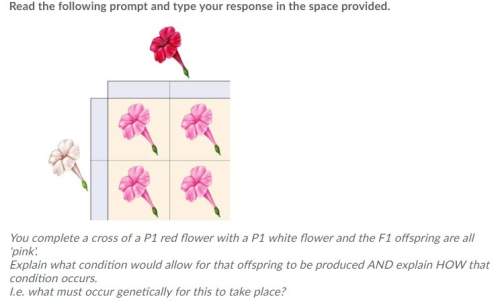
Biology, 08.03.2021 20:30 dalilahrodriguez
When completing this exercise, it may be useful to refer back to Labs 10-12 for information about living primates. In 2009, a new fossil species, called Darwinius masillae, was identified in Germany, represented by a nearly complete skeleton nicknamed Ida (depicted on p. 387 of your lab manual). It lived around 47 mya. It had a small brain, short protruding snout, large eyes, and postorbital bar. Its diet probably included a lot of fruit and leaves. It did not have a dental comb. It had nails instead of claws and was probably an arboreal quadruped. Researchers disagree about whether the fossil is more similar to living haplorhines (tarsiers, monkeys, and apes) or more similar to strepsirhines (lemurs and lorises). The skeleton is about 23 inches (58 cm) long including the tail, and has a body length of about 9 inches (24 cm) without the tail. Describe at least two features that Darwinius shares with living haplorhines.

Answers: 2
Another question on Biology


Biology, 21.06.2019 23:50
Legumes, a type of plant, require rhizobia, a type of soil bacteria, to survive since these organisms fix nitrogen during photosynthesis. rhizobia use the legumes for food. what would most likely happen to the legume population if rhizobia suddenly became extinct?
Answers: 2

Biology, 22.06.2019 03:00
Discuss the functions of epithelial connective nerviud and muscular tissues
Answers: 3

Biology, 22.06.2019 03:30
The graph below compares the rates of reaction of a burning candle and an exploding firework. comparing chemical reactions what can you conclude from the graph? the reaction that causes a firework to explode requires less energy to start, and occurs more rapidly than the reaction that causes a candle to burn. the reaction that causes a firework to explode requires less energy to start, and occurs less rapidly than the reaction that causes a candle to burn. the reaction that causes a firework to explode requires more energy to start, and occurs less rapidly than the reaction that causes a candle to burn. the reaction that causes a firework to explode requires more energy to start, and occurs more rapidly than the reaction that causes a candle to burn. mark this and return
Answers: 2
You know the right answer?
When completing this exercise, it may be useful to refer back to Labs 10-12 for information about li...
Questions

Mathematics, 08.07.2019 01:30

Biology, 08.07.2019 01:30

Mathematics, 08.07.2019 01:30


Mathematics, 08.07.2019 01:30

Mathematics, 08.07.2019 01:30

Mathematics, 08.07.2019 01:30


Mathematics, 08.07.2019 01:30

Biology, 08.07.2019 01:30

Mathematics, 08.07.2019 01:30

Mathematics, 08.07.2019 01:30

Mathematics, 08.07.2019 01:30

Social Studies, 08.07.2019 01:30

Mathematics, 08.07.2019 01:30


Business, 08.07.2019 01:30

Business, 08.07.2019 01:30

Mathematics, 08.07.2019 01:30

Mathematics, 08.07.2019 01:30




